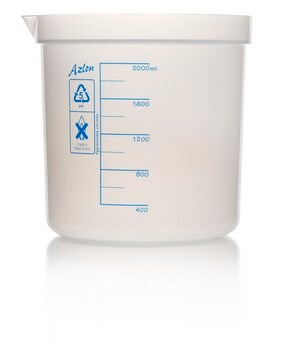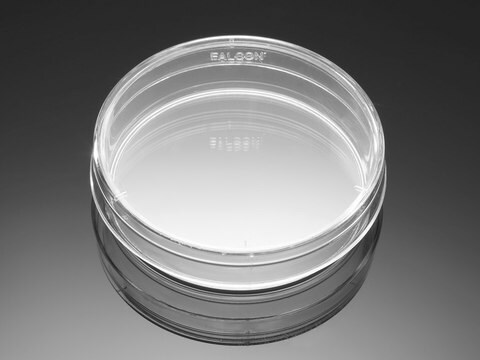M8802
Malonate broth
pH 6.7±0.2 (25 °C), NutriSelect® Plus, suitable for microbiology
About This Item
Recommended Products
sterility
non-sterile
Quality Level
form
powder
manufacturer/tradename
NutriSelect® Plus
technique(s)
microbe id | utilization test: suitable
microbiological culture: suitable
pH
6.7±0.2 (25 °C)
application(s)
food and beverages
water monitoring
microbiology
suitability
Klebsiella spp.
Salmonella spp.
nonselective and differential for Enterobacter spp.
nonselective and differential for Escherichia coli
nonselective and differential for coliforms
General description
Application
Components
Ammonium sulfate, 2.00
Dipotassium phosphate, 0.60
Monopotassium phosphate, 0.40
Sodium chloride, 2.00
Sodium malonate, 3.00
Bromo thymol blue, 0.025
Preparation Note
Footnote
The designations basic, plus, or prime are added to indicate the quality control level, from basic quality control to standard QC plus to prime for full regulatory compliance.
Legal Information
Storage Class Code
11 - Combustible Solids
WGK
WGK 3
Flash Point(F)
Not applicable
Flash Point(C)
Not applicable
Personal Protective Equipment
Choose from one of the most recent versions:
Already Own This Product?
Find documentation for the products that you have recently purchased in the Document Library.
Customers Also Viewed
Articles
An article concerning selective growth media for differentiation and detection of Escherichia coli and other coliforms.
An article concerning selective growth media for differentiation and detection of Escherichia coli and other coliforms.
An article concerning selective growth media for differentiation and detection of Escherichia coli and other coliforms.
An article concerning selective growth media for differentiation and detection of Escherichia coli and other coliforms.
Our team of scientists has experience in all areas of research including Life Science, Material Science, Chemical Synthesis, Chromatography, Analytical and many others.
Contact Technical Service
















